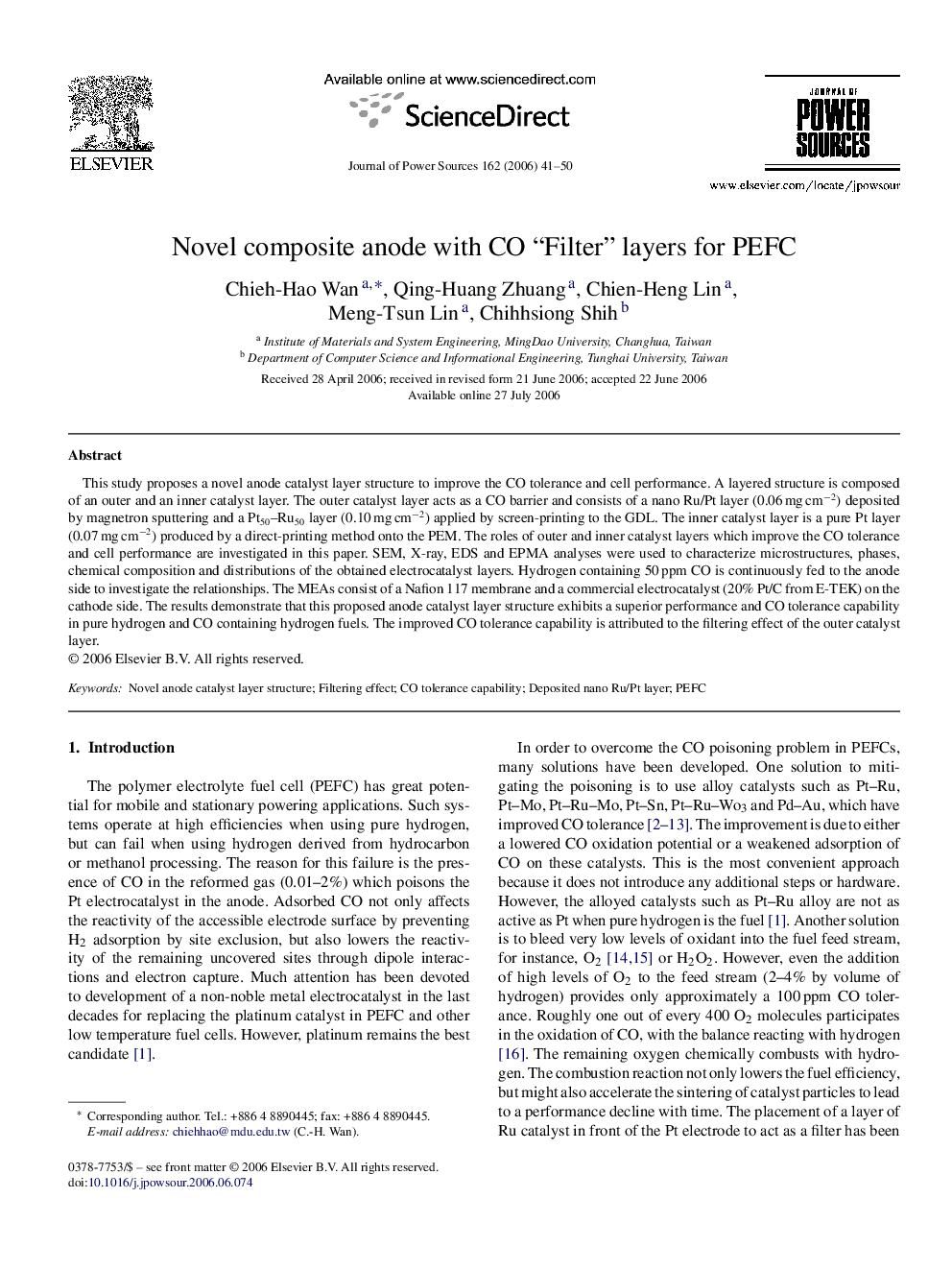| Article ID | Journal | Published Year | Pages | File Type |
|---|---|---|---|---|
| 1291817 | Journal of Power Sources | 2006 | 10 Pages |
This study proposes a novel anode catalyst layer structure to improve the CO tolerance and cell performance. A layered structure is composed of an outer and an inner catalyst layer. The outer catalyst layer acts as a CO barrier and consists of a nano Ru/Pt layer (0.06 mg cm−2) deposited by magnetron sputtering and a Pt50–Ru50 layer (0.10 mg cm−2) applied by screen-printing to the GDL. The inner catalyst layer is a pure Pt layer (0.07 mg cm−2) produced by a direct-printing method onto the PEM. The roles of outer and inner catalyst layers which improve the CO tolerance and cell performance are investigated in this paper. SEM, X-ray, EDS and EPMA analyses were used to characterize microstructures, phases, chemical composition and distributions of the obtained electrocatalyst layers. Hydrogen containing 50 ppm CO is continuously fed to the anode side to investigate the relationships. The MEAs consist of a Nafion 117 membrane and a commercial electrocatalyst (20% Pt/C from E-TEK) on the cathode side. The results demonstrate that this proposed anode catalyst layer structure exhibits a superior performance and CO tolerance capability in pure hydrogen and CO containing hydrogen fuels. The improved CO tolerance capability is attributed to the filtering effect of the outer catalyst layer.
